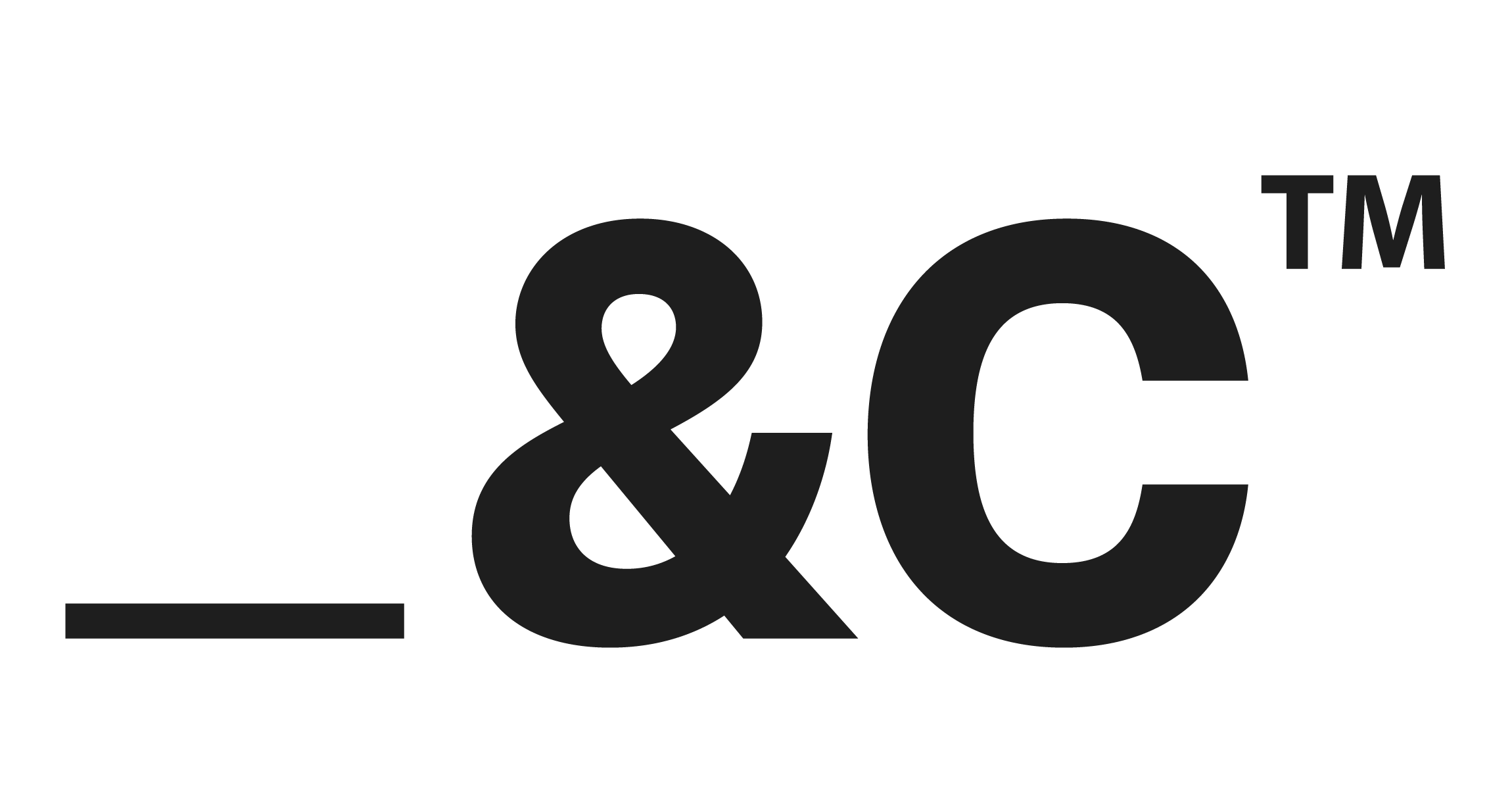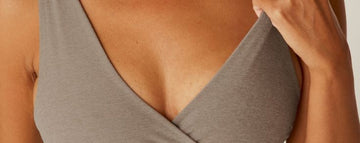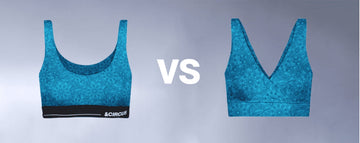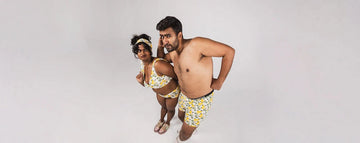Pregnancy is a transformative journey full of excitement, anticipation, and significant changes to your body. Particularly your breasts as they prepare for breastfeeding your little one once they’re born. Therefore, finding a bra that provides comfort, support, and flexibility is essential since every stage of pregnancy brings unique needs. So, how can you enhance your comfort during your childbearing? Here’s a comprehensive guide to help you choose the perfect maternity bra for each trimester.
First Trimester

What happens to your body
During the first trimester, hormonal changes begin to prepare your body for breastfeeding. This hormone increase often leads to increased sensitivity, tenderness, and swelling in your breasts. As a result, you may notice your usual bras feeling tight and uncomfortable as your cup size starts to go up. Furthermore, some women also experience an expansion of the ribcage as the body adapts to accommodate the growing baby.
What to look for in a bra
In the first trimester, opt for maternity bras that prioritise comfort and flexibility based on these traits and features:
-
Soft, stretchy fabric: Choose bras made from materials like cotton or microfiber, which are gentle on sensitive skin.
-
No underwire: Avoid underwired bras, which can press against tender breast tissue and cause discomfort.
-
Light support: A bra with light to moderate support will accommodate initial changes without being restrictive.
-
Easy to wear: Prioritize slip-on bras without any hooks or clasps to help you adapt to minor changes in size during this stage.
-
Seamless design: Seamless bras reduce irritation, especially if your skin feels more sensitive than usual.
With those characteristics in mind, you can choose the Maternity Nursing Bra - Almond Nude, which provides moderate coverage, easy slip-on, loungewear-like comfort, and hypoallergenic materials to help you adapt to breast size increases. Pair it with the matching Maternity Comfort Panty - Almond Nude, which offers a pressure-free waistband to accommodate your pregnancy bump in the long run and allows umbilical breathing.
Second Trimester
What happens to your body
The second trimester typically brings more noticeable breast growth as milk ducts and fat stores develop. Your cup size may increase significantly, and your band size might expand as your ribcage widens. Many women find this period more stable than the first trimester, but the need for additional support becomes apparent.
What to look for in a bra
At this stage, your focus should be ensuring optimal support and accommodating further growth to maintain proper posture and prevent discomfort. Here are some essential features to consider:
-
Wide bands and straps: These provide additional support and distribute weight evenly, reducing strain on your shoulders.
-
Full-coverage cups: Choose full-coverage bras to prevent spillage and provide better support.
-
Stretchable cups: Look for cups that can expand as your breasts grow.
-
Breathable fabric: Ensure the bra is made of breathable materials to keep you comfortable as your body temperature may increase.
-
Convertible options: Some bras have detachable straps or a slidable front, allowing them to double as nursing bras later on,
The Maternity Nursing Bra - Onyx is a perfect choice in an elegant black that ticks all the boxes. Infused with elastane, this bra offers a stretchy band to better adapt to breast growth as you enter the second trimester.
Third Trimester
What happens to your body
By the third trimester, your breasts are preparing for milk production, often feeling heavier and fuller. Your cup size may increase further, and you might notice a leaking colostrum. The weight of your growing belly also adds pressure on your back, making adequate breast support crucial to reduce discomfort.
What to look for in a bra
In the final stretch of your pregnancy, prioritize maximum support and readiness for breastfeeding. Here’s what you need:
-
High-support bras: Opt for bras with firm support to manage the weight of your breasts effectively.
-
Nursing-friendly design: Consider maternity bras with an easy-to-access opening to make breastfeeding more convenient after delivery.
-
Wide underband: A broad underband provides additional stability and reduces strain.
-
Moisture-wicking fabric: A beneficial feature if you experience increased sweating or milk leakage.
-
Proper fit: Ill-fitting bras can cause discomfort or skin irritation.
Like the two maternity bras above, the Maternity Nursing Bra - Spring and Maternity Nursing Bra - Blue Curacao have a wrap-over front you can slide down for breastfeeding. In other words, they can double as maternity and nursing bras that you’ll remain comfortable in for many months to come.
Furthermore, its fabric can absorb moisture and doesn’t need too much time to dry, perfect for any unexpected spillage during this pregnancy stage. It’s made with a stretchy underband and AZO-free dyed micro-modal fabric to protect your skin from irritation.
Common Mistakes to Avoid

Even with the best intentions, it’s easy to make mistakes when shopping for maternity bras. Here are some of the most common pitfalls and how to avoid them:
1. Buying too early
Purchasing maternity bras too early in your pregnancy may lead to fit issues as your body changes. Therefore, it’s best to wait until your breasts stabilize in size, typically around the start of the second trimester. If you need a new bra early on, choose a stretchy or flexible option that can adapt to moderate changes.
2. Ignoring adjustability
Pregnancy brings constant changes, so your bra needs to adapt. To accommodate growth throughout your pregnancy, avoid bras with fixed band sizes or non-adjustable straps. Instead, choose bras with multiple hook-and-eye closures and adjustable straps. Slip-on bras are also an excellent alternative for easier wear.
3. Choosing style over comfort
While it’s tempting to go for pretty bras, prioritizing comfort, and functionality is essential during pregnancy. Opt for designs that feel good on your skin and offer the support you need. You can always explore stylish options once your body has returned to a more stable state post-pregnancy.
Choosing the perfect maternity bra doesn’t have to be overwhelming. Remember, the right bra enhances your physical well-being and boosts your confidence as you embrace the incredible journey of motherhood.
As a rule of thumb, pick a comfortable, breathable, and hypoallergenic pair of maternity bras to avoid irritation. To help you save money in the long run, don’t shy away from maternity bras that can double as breastfeeding bras with a wrap-over front that you can slide down for easier access. Lastly, remember to take any changes in your body size during every trimester into account. You can save time finding the perfect fit by using a sizing calculator. May your pregnancy remain comfortable while you’re expecting your beloved little one!







































